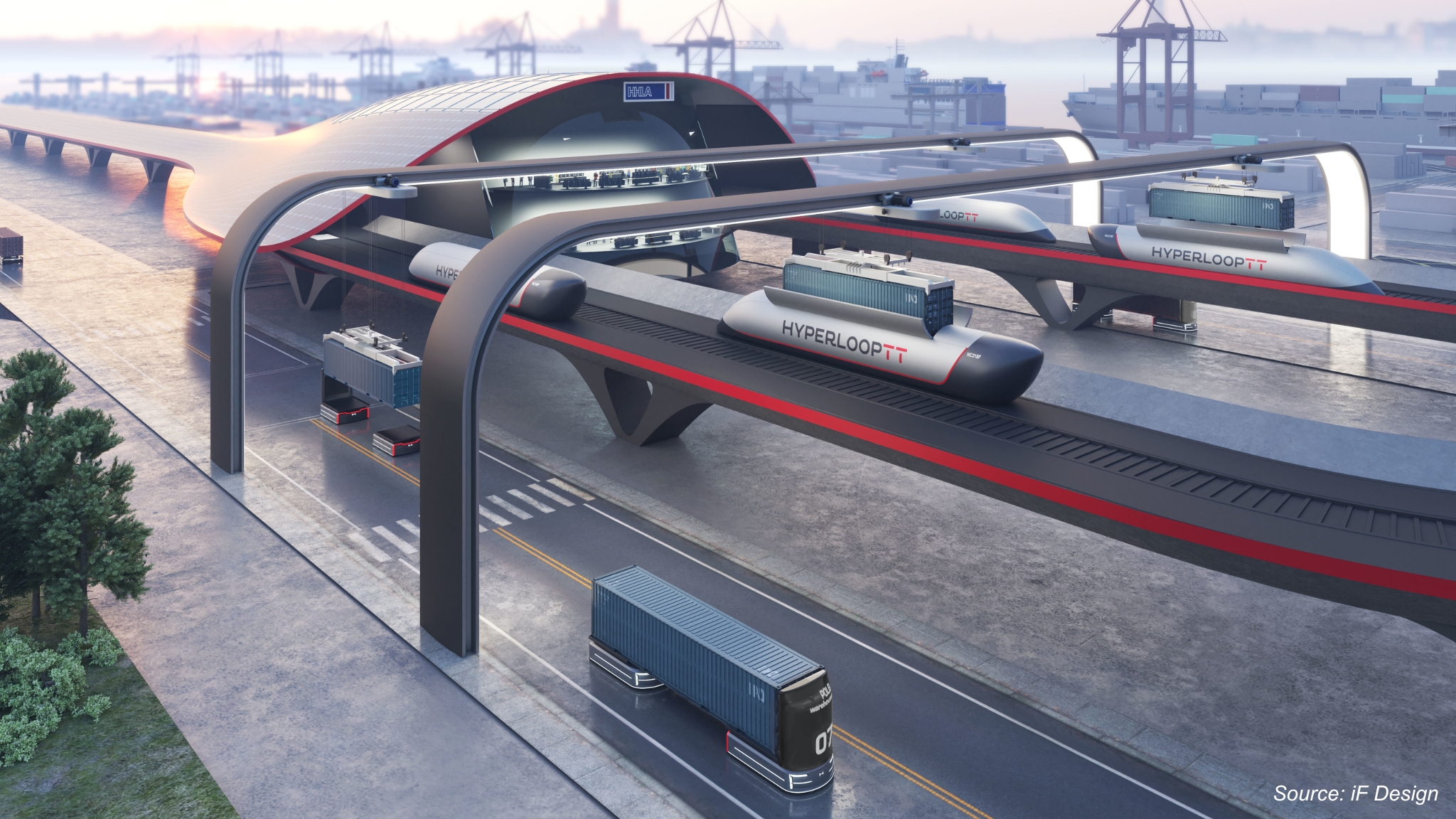Smart Fleet Solutions: Innovation in Transportation
Published: 2025-09-16

You must maintain your fleet properly to achieve high vehicle reliability along with road-ready status. The daily operations include supervising transportation routes, controlling fuel expenses, and evaluating operator performance, as well as maintaining regulatory compliance and addressing sudden equipment failures. And when you’re doing all of that manually or across scattered systems, it gets overwhelming fast.
That’s where smart fleet solutions come in. The system integrates all information for quick decision-making, which results in both speed and improved intelligence. Every situation becomes clearer to you, and you gain better control over upcoming developments. The operation of five vehicles or five hundred vehicles becomes more efficient through technological advancements that enable stress reduction.
This article walks you through what smart fleet management means, what advanced systems are out there, and how you can choose the right platform for your business.
What is Smart Fleet Management?
Smart fleet management involves using technology to customize your fleet performance. Instead of relying on manual logs, scattered spreadsheets, or simply intuitive instinct, you get real-time data from your vehicles, your drivers, and even your routes.
The primary goals of this practice are to boost productivity, maintain regulatory compliance, and ensure safety for all members.
Smart systems also help you stay ahead of breakdowns, detect poor driving habits, and manage fuel use more carefully. The result? Fewer surprises and more control.
Advanced Fleet Management Solutions
Here’s a closer look at the key technologies and solutions that make smart fleet management possible. These aren’t just trendy features; they are practical solutions that solve real problems.
1. Telematics
Telematics uses GPS tracking with vehicle diagnostic information and driver performance monitoring. Through telematics, you can access the current location of all vehicles along with their operational data and diagnostic alerts.
The technology enables users to analyze vehicle statistics, which helps them decrease waiting periods and minimize fuel expenses while identifying early signs of high-risk driving practices. It also gives drivers a sense of accountability, which naturally leads to better habits on the road.
2. Compliance Management
Being ahead of hours-of-service regulations and other driver compliance is at the heart of fleet management. Paper logs are prone to errors, lost data, and unnecessary risk. That's why many fleets now rely on electronic logging devices (ELDs) to make the process easier and more efficient.
An ELD records driving time automatically, free from the risk of human entry mistakes, lowering the risk of violations. It is also a high-tech system that integrates important fleet information, simplifies day-to-day operations, and provides more control for managers, such as real-time insights into driver behavior. Your staff can devote more time to making the fleet safe, efficient, and compliant with fewer records and less administrative time.
3. Driver Monitoring and Training
Vehicle fleet management systems provide real-time monitoring to track driver performance by recording driving patterns such as harsh stops, rapid turns, excessive speed, and signs of fatigue. The collected data offers valuable safety benefits alongside training applications.
The system enables you to incentivize safe drivers and educate those who struggle while simultaneously decreasing accidents. The knowledge of performance tracking causes drivers to practice safer driving habits, which generates advantages for all road users.
4. Route Optimization
No one wants to waste fuel or be stuck in traffic. Route optimization software considers traffic history, weather, and patterns to determine the fastest and most fuel-saving routes. You can dynamically modify routes in real-time as conditions evolve, keeping your drivers on time and your customers satisfied.
Even saving a few minutes per trip can be very significant when multiplied over the total fleet.
5. Asset Tracking
Beyond vehicles, you might need to keep track of trailers, containers, equipment, or tools. Asset tracking uses GPS or RFID tags to help you know where everything is, whether it’s on the road or sitting in a yard.
You’ll spend less time looking for lost items, and you’ll reduce theft or misuse. It also helps improve scheduling since you know what’s available and when.
6. Data Analytics and Reporting
Fleet management solutions generate extensive data, which becomes valuable through proper data usage. Raw numbers become actionable insights through analytical tools. The ability to detect patterns in operational performance enables data-driven decision making instead of making decisions based on speculation or unverified understanding.
Through user-friendly monitoring systems, businesses can view essential performance indicators, which include distance-based expenses and standard timeframes for deliveries and service records.
7. Predictive Maintenance
The cost of breakdowns extends beyond repair expenses since they result in both downtime periods and unfulfilled delivery commitments. By using sensor information along with historical patterns, predictive maintenance systems identify potential problems before they develop.
When components start to wear down, you will receive an alert that prevents engine light warnings or highway emergencies. Through proper scheduling practices, you can perform maintenance tasks at convenient times to maintain continuous fleet operations with no unexpected events.
8. Fuel Management
Fuel is one of your biggest expenses. With fuel monitoring tools, you can track exactly how much is being used, when, and where. This helps you identify fuel theft, inefficient driving habits, and potential vehicle issues that lead to excessive consumption.
By comparing fuel use across drivers and vehicles, you can also set benchmarks and make changes that save money over time.
Ways to Drive Innovation in Transportation with Advanced Fleet Management Solutions
Transportation operations require more than vehicle management because smart fleet solutions transform the way your system functions. The right implementation of these solutions enables businesses to reduce costs and operate more effectively while maintaining a competitive edge. Here are some practical ways advanced solutions can push your business forward:
Use Predictive Analytics to Stay Ahead
You don’t have to wait for things to go wrong. Predictive analytics provides you with insights before problems arise. By studying patterns in your fleet’s data, you can:
-
Plan vehicle maintenance before breakdowns happen
-
Spot fuel waste and fix it
-
Avoid delays by adjusting routes based on trends
Make your Fleet More Sustainable
Being eco-friendly isn’t just good for the planet; it’s also good for your business. Smart systems let you track and reduce your environmental impact. You can:
-
Monitor fuel use and emissions
-
Plan for hybrid or electric vehicles
-
Cut waste with better route planning
Keep Customers in the Loop with Real-Time Tracking
People expect updates and fast. Advanced tools provide real-time tracking, showing exactly where each vehicle is located. This means:
-
Your team knows when delays happen
-
Customers get accurate delivery times
-
You build more trust and reliability
Get the Most Out of Every Asset
Unused assets are just money sitting still. With better tracking, you can:
-
Know where every trailer is
-
Keep equipment moving instead of sitting idle
-
Make better decisions about how and when to use your resources
Put IoT and AI to Work
These aren’t just buzzwords anymore. IoT devices collect data from your vehicles, while AI helps make sense of it. Together, they can:
-
Suggest more efficient routes
-
Analyze driving patterns to improve safety
-
Predict problems before they affect operations
Improve Safety with Better Monitoring
Driver safety isn’t something you can take lightly. With the right tools, you can:
-
Track habits like speeding, harsh braking, or fatigue
-
Send real-time feedback to drivers
-
Use that data for training and coaching
Automate Compliance Tasks
Staying compliant takes time and attention, but you don’t need to handle everything manually. Smart fleet systems can:
-
Track driving hours and vehicle inspections
-
Manage records automatically
-
Alert you when something needs attention
Boost Your Supply Chain and Logistics
Innovation doesn’t stop with your vehicles; it affects your entire operation. Smart tools provide you with better visibility across your entire supply chain. With that, you can:
-
Monitor shipments in real time
-
Shorten lead times by planning smarter
-
Keep better control of inventory
How to Determine the Right Fleet Management Solution for Your Business
You don’t need a long checklist to pick the right fleet management system. You just need to focus on what actually helps your business run better. Here are the four things that matter most
1. Know What You Need
Start with the basics. What do you want to fix or improve? Maybe it’s late deliveries, rising fuel costs, or too much time spent on manual tracking.
Focus on features that solve real problems, such as:
-
GPS and route tracking
-
Fuel and maintenance management
-
Driver performance insights
-
Compliance and reporting tools
If a platform offers fancy extras you’ll never use, skip them. Stick to what fits your day-to-day needs.
2. Choose Something That Grows with You
What works for five vehicles today might not work when you have twenty next year. You don’t want to keep switching solutions as you grow.
Pick a solution that can:
-
Handle more vehicles, drivers, and routes
-
Support multi-location or cross-region setups
-
Add new features without a full system upgrade
Scalability saves time, money, and headaches in the long run.
3. Go for a Simple, User-Friendly Setup
If it takes a week to train your team on the technology, it’s not the right one. Your drivers and managers should be able to use it without needing tech support constantly.
Look for:
-
Clear dashboards and reports
-
Easy access to key data
-
Minimal setup and training
The simpler it is, the more likely your team is to use it daily and use it well.
4. Make Sure it Integrates with your Systems
Your fleet solution shouldn’t operate in isolation. It should integrate with the platforms you already rely on, such as GPS devices, accounting software, or maintenance apps.
A good system will:
-
Sync with your existing tools
-
Cut down on manual data entry
-
Help your team move faster with less back-and-forth
If you also work with vendors or outside partners, choose a solution that lets you sync contact details or updates directly into your network.
In Conclusion
So, now you know that there’s no perfect way to run a fleet, but there are better ways. Smart solutions won’t fix everything overnight, but they’ll give you more tools to handle problems before they cost you time or money. Keep things simple, stay flexible, and let the technology work for you, not the other way around.
About the Author
 Olivia is a digital marketing expert at Outreach Monks, crafting successful strategies for clients. She's a valuable contributor, sharing content and insights on industry updates. Olivia's articles offer a fresh perspective on emerging trends. Her passion for the field is evident in all her contributions.
Olivia is a digital marketing expert at Outreach Monks, crafting successful strategies for clients. She's a valuable contributor, sharing content and insights on industry updates. Olivia's articles offer a fresh perspective on emerging trends. Her passion for the field is evident in all her contributions.
About the Reviewer
 Debashree Dey is a skilled Content Writer, PR Specialist, and Assistant Manager with strong expertise in Digital Marketing. She specializes in crafting visibility strategies and delivering impactful, data-driven campaigns. Passionate about creating engaging, audience-focused content, she helps brands strengthen their online presence. Beyond work, she draws inspiration from creative projects and design pursuits.
Debashree Dey is a skilled Content Writer, PR Specialist, and Assistant Manager with strong expertise in Digital Marketing. She specializes in crafting visibility strategies and delivering impactful, data-driven campaigns. Passionate about creating engaging, audience-focused content, she helps brands strengthen their online presence. Beyond work, she draws inspiration from creative projects and design pursuits.
















Add Comment